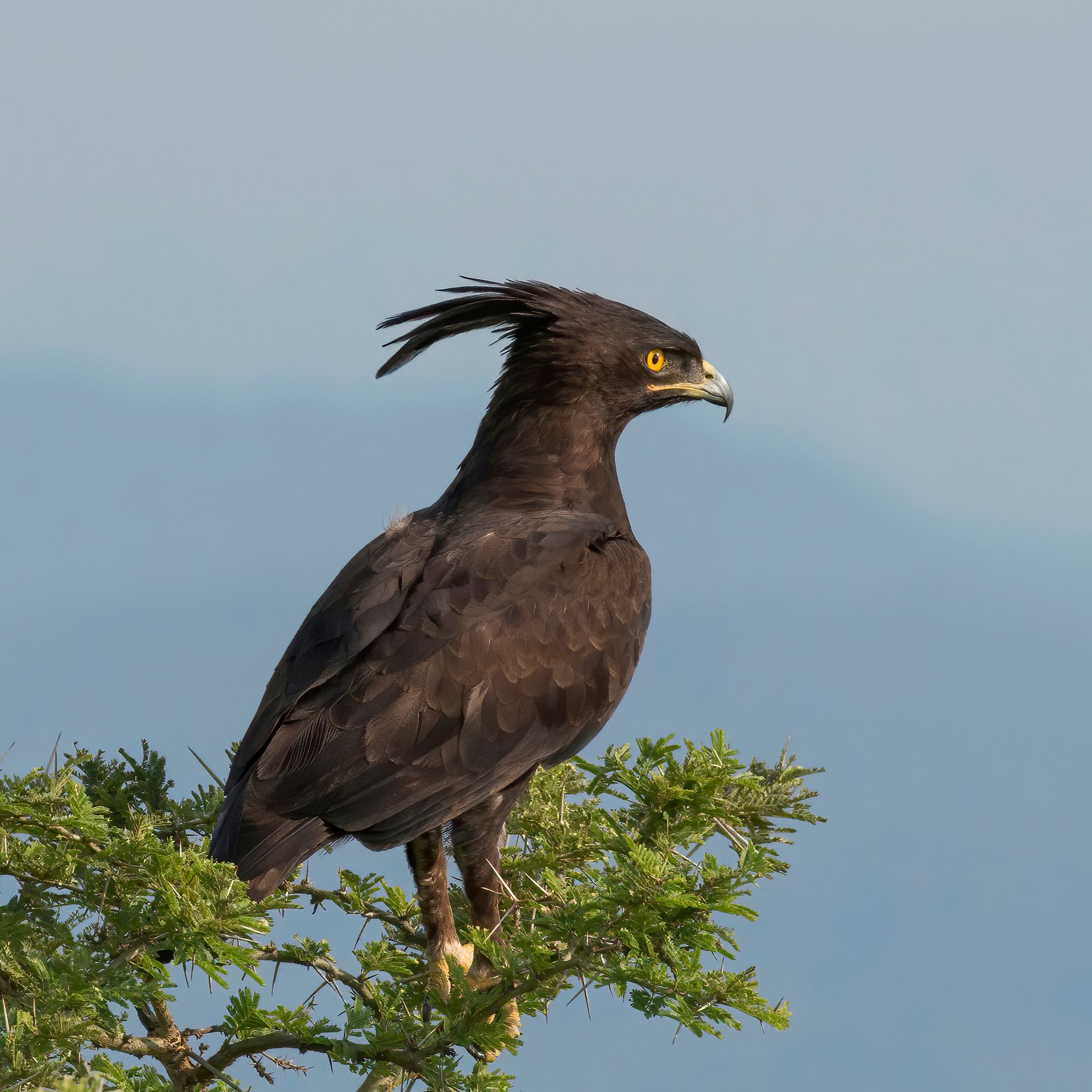A BIRDING PARADISE
Tanzania's avian diversity is simply staggering!
While Tanzania is best known for its Big Five safaris and cinematic migrations, its true feathered treasure lies in the skies, wetlands, forests, and lakes. With more than 1,100 recorded bird species, the country is a quiet powerhouse of avian diversity - a haven not just for seasoned twitchers but also for safari-goers who appreciate the quieter magic of the wild. Here, African fish eagles duel with the breeze, flamingos tint the lakes pink, and rare forest species flash through the canopy. Whether you’re on the savannah or in the highlands, Tanzania offers exceptional birding in some of the most spectacular landscapes on the continent.
Many birders begin their Tanzanian journey in the north, and with good reason. Lake Manyara National Park may be one of the smaller reserves, but its location along the Rift Valley and its alkaline lake environment attract thousands of flamingos in season. The park’s dense forest is also home to silvery cheeked hornbills and white-browed coucals, while the escarpment edge is favoured by a variety of raptors
Not far from Manyara lies Tarangire National Park, an underrated gem for birding. Its ancient baobabs, swamplands, and river systems create diverse microhabitats where over 500 bird species have been recorded. This is one of the best places in East Africa to spot the endemic yellow-collared lovebird, often seen flitting in noisy clusters between acacia branches. Other highlights include the colourful purple grenadier, the northern white-crowned shrike, and the secretive slate-coloured boubou.
For those with a passion for wetland species, the Rubondo Island National Park on Lake Victoria offers an unusual birding experience. This remote island is rarely visited, but it shelters a rich population of birds, including African grey parrots that were released here in 2000, giant kingfishers, and African fish eagles. Its forests echo with song, while the shores play host to waders, herons, and jacanas.
Heading south, the vast miombo woodlands of Ruaha National Park are home to some of Tanzania’s rarer species. Here, birders can find the Ruaha red-billed hornbill, the ashy starling, yellow-bellied hyliota, and purple-banded sunbird. The park’s remoteness means it’s best visited with expert guides who know where to look - and what to listen for.
In the coastal belt and Eastern Arc Mountains, birders will find even more endemic species. The Udzungwa Mountains, part of a global biodiversity hotspot, host endemics like the Udzungwa forest partridge and the rufous-winged sunbird. These areas can be more physically demanding to explore, but the rewards are immense for serious birders.
Meanwhile, Nyerere National Park (formerly Selous) offers a wonderful mix of waterbirds, savannah species, and woodland birds. Its network of oxbow lakes and channels attracts open-billed storks, spoonbills, African skimmers, and the elegant saddle-billed stork. Boat safaris along the Rufiji River provide unique, water-level birding - a welcome change in pace and perspective.
And then there’s the Serengeti. Though famous for wildebeest and predators, the park is also a hotspot for birds of prey. Long-crested eagles, tawny eagles and bateleurs circle the plains, while secretary birds stalk the grasslands on their impossibly long legs. After the rains, the short grasses erupt with larks, pipits, and widowbirds in breeding plumage, transforming the landscape into a living field guide.
For those seeking iconic species, the crowned crane is a regal presence in many of Tanzania’s wetlands, while the woodland kingfisher and lilac-breasted roller bring spectacular bursts of colour to even the quietest moments on safari.
Leadwood Holidays works with specialist birding guides across Tanzania, offering both dedicated birdwatching safaris and tailored itineraries that blend big game with rare sightings. Whether you’re chasing endemics or adding to your life list, Tanzania’s birds will surprise and delight at every turn.
Explore our Tanzania itineraries and discover how birdwatching can become the highlight of your next safari.















